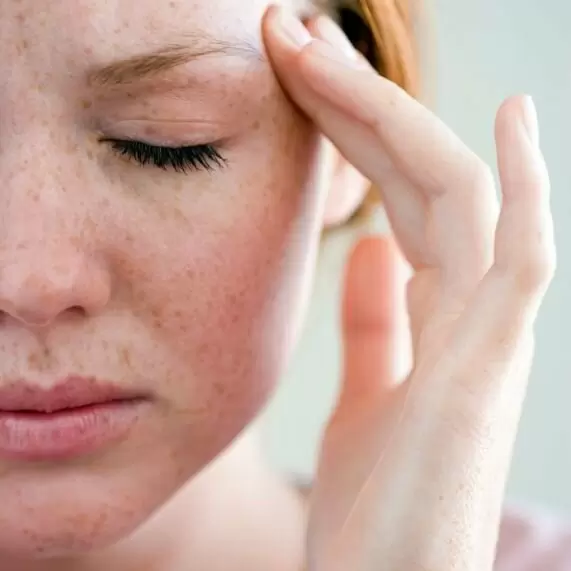What is a tension headache?
16 November 2020


16 November 2020


Головний біль напруги – одна із найчастіших форм болю голови, що зустрічається в популяції з частотою від 30 до 70% випадків. Раніше він мав назви «стресовий біль голови», «психогенний», «психоміогенний», «есенціальний», «простий», «ідіопатичний».
Типова його форма – біль від малої до середньої інтенсивності, що не заважає функціонуванню, без додаткових симптомів (іноді може бути щось одне – світло- чи звукобоязнь), двобічний, стискаючий, може супроводжуватись напруженням перикраніальних м'язів, а може і не супроводжуватись.
Біль такого типу буває рідким епізодичним (турбує менше 1 разу на місяць, або до 12 разів/рік), частим епізодичним (від 1 до 14 разів на місяць протягом 3 місяців) або хронічним (15 та більше днів на місяць протягом 3 місяців).
Хоча цей тип головного болю і відноситься до первинних та доброякісних, подібний біль може супроводжувати різноманітні стани, тому важливо відрізняти його від вторинних форм. В одного пацієнта одночасно може бути кілька форм головного болю, і важливо розпізнати їх всі. Наприклад, в додаток до вже існуючого роками типового болю з'являється новий, подібний, проте більшої інтенсивності та чітко зв’язаний з якимось захворюванням (застуда, гайморит, тощо) чи травмою голови, то такий біль кодується як вторинний по відношенню до виявленого захворювання.
Both central and peripheral pain mechanisms play a role in the pathogenesis of headache. When the muscles of the head are tensed due to, for example, uncomfortable prolonged posture or stress, blood flow in the muscles deteriorates, proinflammatory molecules are released in the blood, muscle pain receptors begin to overreact to normal stimuli, increase excitability of pain-sensitive neurons in the spinal cord. Central mechanism - in the neurons of the brainstem reduces inhibitory analgesic activity, which facilitates pain transmission to the muscles and increases their spasm and tension, contributes to the chronicity of pain. Emotional stress and psychological disorders also contribute to muscle hypertonia and increase pain. In episodic GB of voltage, the peripheral mechanism of hypersensitivity is more important, in chronic - central.
Awkward posture
Prolonged stress
Smoking
Caffeine abuse
Cold and cold
Insufficiency of sleep
Inadequate diet
Dehydration
Anxiety, depression
Treatment of this type of headache depends on the intensity and frequency of attacks, includes non-drug techniques - massage, relaxation, meditation, yoga, mindfulness, acupuncture, cognitive-behavioral therapy, change of method life - normalization of nutrition, physical activity, sleep; and medication - nonsteroidal anti-inflammatory, muscle relaxants to relieve seizures and antidepressants, anticonvulsants as a prophylactic therapy.
In order to choose the right treatment, the doctor must take into account many factors, which will help a headache diary.
